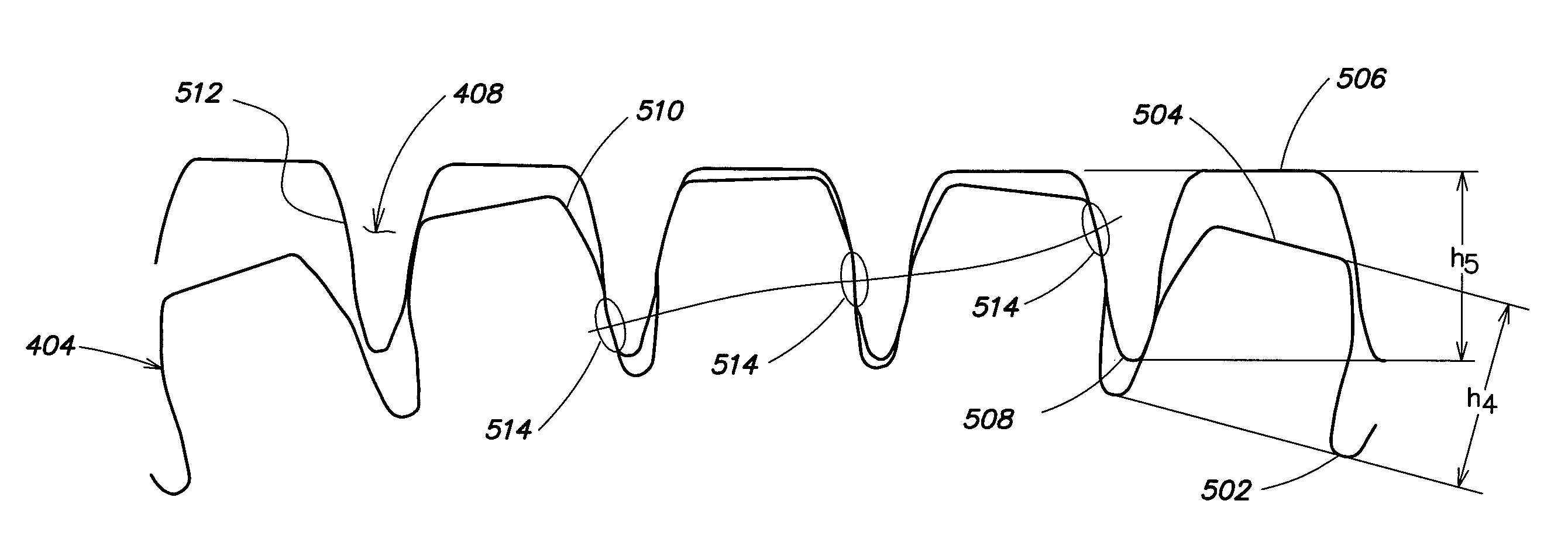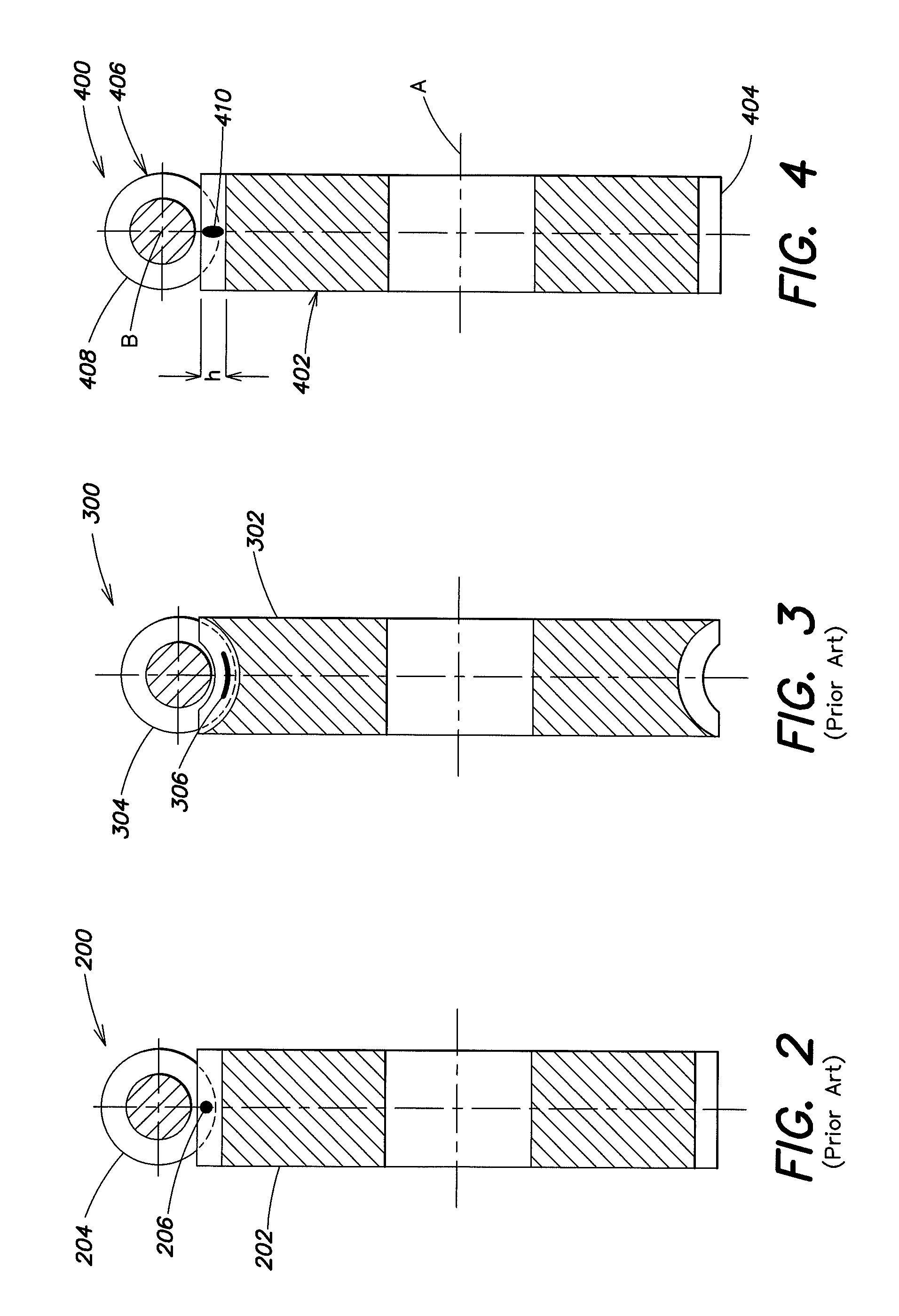Power-assisted steering having a gear mechanism
a technology of gear mechanism and power steering, which is applied in the direction of gearing, hoisting equipment, transportation and packaging, etc., can solve the problems of high loading of teeth, severe wear, overloading of teeth, etc., and achieve the effect of reducing the load per unit area of teeth
- Summary
- Abstract
- Description
- Claims
- Application Information
AI Technical Summary
Benefits of technology
Problems solved by technology
Method used
Image
Examples
Embodiment Construction
[0029]FIG. 4 illustrates a worm gear mechanism 400 in a section parallel to the rotation axis A of a worm gear 402. The worm gear 402 is cylindrical and has teeth 404 on its outer rim. A worm 406 rotates about an axis B that points perpendicularly to the drawing plane. The worm 406 is also cylindrical and has teeth 408 on its periphery. The teeth 404 of the worm gear 402 engage with the teeth 408 of the worm 406. The contact of the teeth 404 of the worm gear 402 with the teeth 408 of the worm 406 is identified as region 410. The contact region 410 extends substantially along height h of the teeth 404, 408 and is linear.
[0030]FIGS. 5A-5B illustrate the tooth geometry of the worm 406 and the worm gear 402 of FIG. 4. FIG. 5A shows the teeth 408 of the worm 406 pointing downward and the teeth 404 of the worm gear 402 pointing upward. The teeth 404, 408 engage with one another in this depiction as well. The teeth 404, 408 each have a height h4, h5, respectively. The height h4 extends fro...
PUM
 Login to View More
Login to View More Abstract
Description
Claims
Application Information
 Login to View More
Login to View More - R&D
- Intellectual Property
- Life Sciences
- Materials
- Tech Scout
- Unparalleled Data Quality
- Higher Quality Content
- 60% Fewer Hallucinations
Browse by: Latest US Patents, China's latest patents, Technical Efficacy Thesaurus, Application Domain, Technology Topic, Popular Technical Reports.
© 2025 PatSnap. All rights reserved.Legal|Privacy policy|Modern Slavery Act Transparency Statement|Sitemap|About US| Contact US: help@patsnap.com



